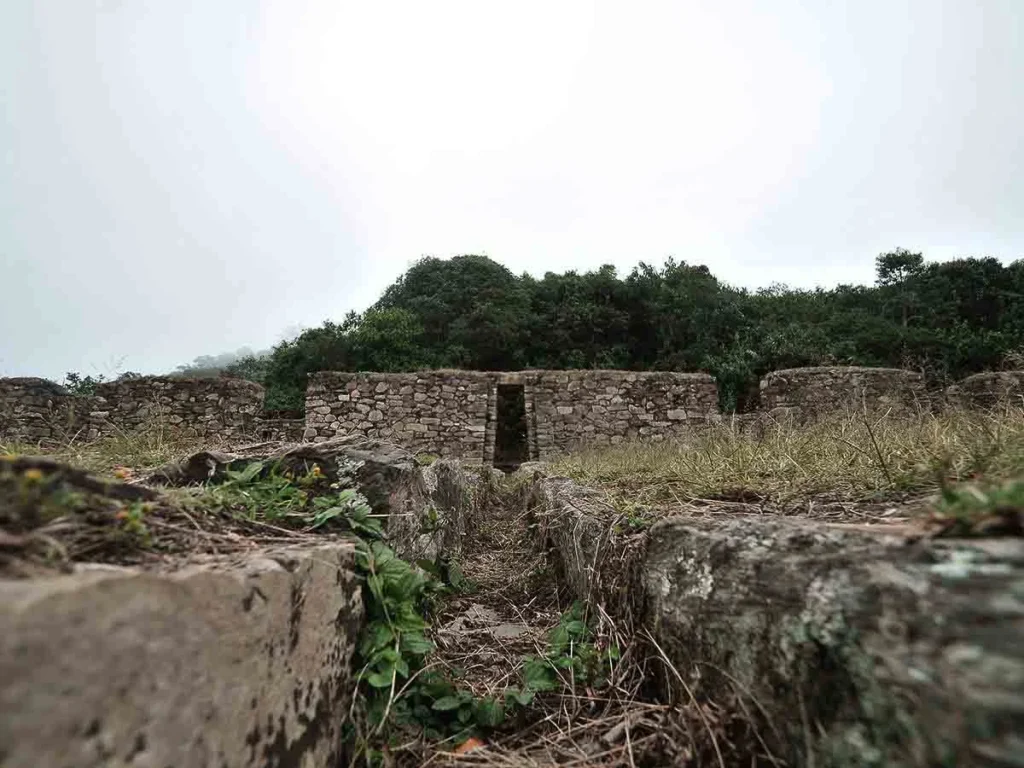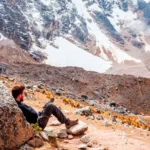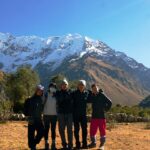Salkantay Trek 4 Days: Walking into the Andes and Finding My Way to Machu Picchu

Some months ago, I started dreaming of the Salkantay Trek, watching lots of YouTube videos, reading reviews and preparing myself for this adventure. But nothing that can actually prepare you for an adventure like this. In this blog I will try to put into words my experience and share some of the most amazing discoveries and learnings I took with me.
I joined a 4-day version of the trek, which goes over the Andes and down to the cloud forest. This transition is felt physically and mentally, as the days go by you are rewarded continuously with stunning views. All of this is topped with a guided visit to Machu Picchu.
Day 1: The First Steps Toward Salkantay
An early beginning to the day set the tone of the experience. We took a scenic ride through quiet towns, as the sun was rising. We enjoyed this ride for almost 4 hours before reaching Soraypampa. There, the cold air and windy weather welcomed us. The mountains and the stunning views were the first to impress me as soon as we arrived.
After gearing up and a last-minute check of our backpacks, we started the hike. The first goal for the day was Humantay Lake. This first stretch hit me hard, climbing all the way to 4200 m drains your energy. Our guide was very patient and helpful, he knew all sorts of tricks to help with the altitude symptoms.
When we finally arrived at the lake, all my fatigue suddenly felt irrelevant. The views of the imposing glaciers and the turquoise waters are a scene photo can’t do justice to. We took a short break to rehydrate and enjoy the views before descending.

Later, walking toward our first camp in Soroccocha, I started to understand the rhythm of this trek. Long, steady stretches. Wide mountain silence. Time to think without really trying. That night, wrapped in layers, I fell asleep hearing nothing but the wind running across the valley.
Day 2: Reaching the Highest Point
Once again, the day started before the sunrise. We set off to the day’s hike after an energizing breakfast. The trail took us up to Salkantay Pass, the highest point of the whole experience. This hike is challenging and forces you to go slowly, breathe intentionally and spend some time with your thoughts. Reflection along this hike is a constant.
Eventually the Apu Salkantay revealed itself in front of us. It is imposing, massive and eye-catching. At the pass many things stand out, but for me the most relevant is the contrast between what is behind and in front of us. In the back the Andean landscapes are filled with dry views, massive canyons and Andean peaks. In front, you can feel the wind climbing from the jungle and a greener and livelier landscape.

The descent carried us through a dramatic shift in scenery. Plants, birds, waterfalls, everything grew denser by the hour. By the time we reached Lucmabamba, the world around me had changed completely. Humidity replaced cold, and the smell of damp soil replaced the crisp air of the highlands. It was like finishing a chapter and starting a new one immediately.
Day 3: The First Glimpse of Machu Picchu
On the third day we left the campsite with the promise to reach Aguas Calientes by the afternoon, an easier day on the trails and the first view of Machu Picchu. But first, we had a last push to Llactapata, climbing there took us about 3 hours.
Reaching Llactapata was the moment I had been waiting for. From its terraces, Machu Picchu appeared far across the valley, small, almost unreal. It wasn’t the typical postcard view. It was quieter, more intimate, as if we were watching the citadel from backstage.

After spending time enjoying the views and learning about the purpose of this site, we descended to Hidroelectrica. There, we had lunch before joining the last stretch of the day. The hike to Aguas Calientes follows the Urubamba Canyon and the train tracks, which doesn’t sound as impressive as the previous trails, but believe me, getting closer to the goal feels special. Along this trail, which is mostly flat, we could enjoy hidden views of Machu Picchu and the fresh air from the forest.
Day 4: Machu Picchu and the Road Home
Mixed emotions came with the last day of this adventure. I was not to have to walk much this day, but also excited about finally visiting Machu Picchu. After all I’ve spent the past 3 days pushing my limits and letting nature amaze me, with the goal of arriving transformed to my final stop.
Once at the citadel, our guide walked us through the main areas, explaining what researchers have learned over the years. Walking into Machu Picchu felt like stepping into a dream. The mist curled around the stone walls, terraces, and temples. For a moment, I wasn’t sure what was real.
Highlights:
- Sacred Plaza: An open space for ceremonies. The Temple of the Three Windows stood out for its role in tracking the Sun and marking seasonal changes, essential for agriculture. It also reflects the Inca concept of the three worlds: Hanan Pacha, Kay Pacha, and Uku Pacha.
- Casa del Inca: The presumed royal residence. The layout, construction quality, and central boulder suggest its importance. The small carved fountains in the rock may have served as reflective surfaces to observe the sky.
- Temple of the Sun: Impressive not only for its design but for its precise alignment with astronomical events—another example of the long Andean tradition of sky observation.
- Quarry Area: Helped visualize the labor behind building Machu Picchu. Despite the mountain being mostly rock, shaping and transporting blocks required skill and planning.
- Terraces: Surround the site and reveal advanced agricultural engineering. Their drainage systems and soil preparation show how the Incas optimized farming in steep terrain.



To conclude the day, we took a train to Ollantaytambo, which is a highlight itself. Followed by a Van ride to Cusco. I was exhausted, but every single ache was worth after all what I experienced during this trip.
Final Thoughts
This 4-day Salkantay route is not rushed, not overly demanding, and not just a physical challenge. It’s a gradual immersion into the Andes, a clear progression from stone and ice to green valleys and eventually to one of the most iconic sites in the world. Walking into Machu Picchu instead of simply arriving by train makes the experience feel coherent, meaningful, and earned.

